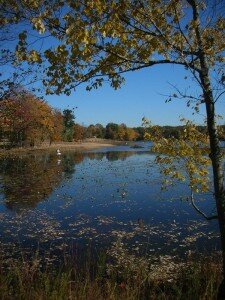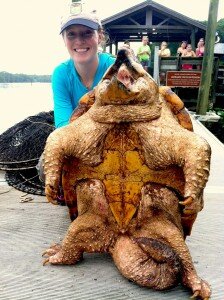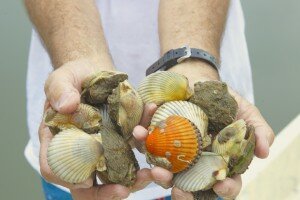We will be archiving AmericasWildlife.org as a record of our vision process for Conserving the Future: Wildlife Refuges and the Next Generation.
Please visit www.fws.gov/refuges/vision for all the products developed from the process.
Thank you!
We will be archiving AmericasWildlife.org as a record of our vision process for Conserving the Future: Wildlife Refuges and the Next Generation.
Please visit www.fws.gov/refuges/vision for all the products developed from the process.
Thank you!
 I began my position as an Urban Refuge Intern with Patuxent Research Refuge in September of 2012, just as the school year was beginning. This being an off-refuge position, I spent the majority of my time in schools. I was thus able to reach countless more students in my school district of Fairfax County, Virginia than would have been possible thirty-plus miles away up at the refuge in Laurel, Maryland. It felt great knowing I was doing my part to educate the youth about the importance of the natural world, as well as demonstrate to them how their day-to-day choices have a real impact on the fate of the environment and, as a corollary, the very nature of our continued existence on our beloved Earth.
I began my position as an Urban Refuge Intern with Patuxent Research Refuge in September of 2012, just as the school year was beginning. This being an off-refuge position, I spent the majority of my time in schools. I was thus able to reach countless more students in my school district of Fairfax County, Virginia than would have been possible thirty-plus miles away up at the refuge in Laurel, Maryland. It felt great knowing I was doing my part to educate the youth about the importance of the natural world, as well as demonstrate to them how their day-to-day choices have a real impact on the fate of the environment and, as a corollary, the very nature of our continued existence on our beloved Earth.
One group of students in particular really touched my life in a special way. These third- and fourth-grade children were designated to be pulled out of their regular class for one hour each week to work with my supervisor and I on various environmental projects. As these students had underperformed on their Virginia Standards of Learning (SOL) tests the previous school year, the goal of these weekly meetings was to get them to focus on the concept of change as demonstrated through various transformations occurring year-round in the natural world. It was hoped their test scores would improve in this subsequent school year due to increased proficiency in such important test-taking skills as pattern recognition and attention to detail.
A number of students in this group (self-named the “Brainstormers”) were fairly rambunctious, which was perhaps at least partially related to why they were performing poorly on their assessments in the first place. There were weeks when these kids were so poorly behaved that we felt near our wits’ end by the close of our lesson with them. The acting up got particularly bad when we took them outside, which was unfortunate because connecting children with the outdoors (in the most literal sense possible) is one of the greatest joys of environmental education. We were able to endure the running loose, the yelling, the fidgeting, and all the other issues encountered by keeping our minds focused on what was truly important: we were exposing these kids to something they had had few previous opportunities to explore, at least in a formal educational setting.
I will never forget the day these students completely blew me out of the water. After an entire school year of mitigating less-than-stellar behavior, it was mid-April and I was getting ready to transition to a different job for the summer season. During our last meeting with these kids my supervisor presented me with a stack of beautifully handcrafted farewell cards, one from each student. The time I thought they had been using over our last several meetings to write to their pen pals in Russia had in actuality been used to make these treasures for me, complete with pictures and all kinds of color! She then gathered them all around in a circle and had them take turns describing what they would miss most about me. I was touched beyond belief.
It’s moments like those that make one realize why educators do what they do. Teaching children about the environment might not always be a cake walk, and the rewards are often subtle and long in the making. If ever I get discouraged due to poor behavior or lack of enthusiasm among future pupils, I will think back to this one moment that completely reaffirmed my belief in spreading the good news about nature to our young folks. One letter in particular stands out in my mind. I cannot recall the exact words, but it went something like this (adorable misspellings not included): “When we first started I did not feel good about myself. I did not think I was smart. Now I am a smart boy, proud boy, nature boy. I can do anything.” I consider my job well done if I can touch just one student in that manner in the course of a school year.
Alex was an intern at Patuxent Research Refuge.
 The Florida Fish and Wildlife Conservation Commission study some pretty strange wildlife. Alligator snapping turtles are the largest freshwater turtles in the world and researchers Kevin Enge and Travis Thomas are tracking the numbers and behavior of these giants. The turtles are found in and near the Lower Suwannee National Wildlife Refuge, and we went out with the guys to film them trapping.
The Florida Fish and Wildlife Conservation Commission study some pretty strange wildlife. Alligator snapping turtles are the largest freshwater turtles in the world and researchers Kevin Enge and Travis Thomas are tracking the numbers and behavior of these giants. The turtles are found in and near the Lower Suwannee National Wildlife Refuge, and we went out with the guys to film them trapping.
Our intention was to capture a successful state-refuge partnership and footage of these 100 plus pound turtles. There were 24 traps set along the river banks and we set off around 8:00 AM with two boats and 7 crew. The first few traps yielded a few small fish, but Enge encouraged us that upriver was where they usually find them. When a trap did have a turtle swimming around inside, the size and shape surprised me. These turtles are prehistoric-looking with a large heavy head, a think long shell, and three ridges of large scales resembling a plated dinosaur. Though not an endangered species because of the exotic pet trade and over-harvesting for their meat, Florida law has protected these giants as a species of special concern.
 Once all the traps had been collected, we stopped on a dock to measure, weigh and tag the four alligator snappers we had trapped. There were two turtles around 100 pounds, one around 50 and a smaller 15-year-old weighing in at 20 pounds. While the researches worked quickly to gather data on the turtles, a crowd started to form in awe of the giant turtles. Pictures were snapped and microchips were implanted; which made this trip a success in our eyes as well as the Florida Wildlife Commission crew.
Once all the traps had been collected, we stopped on a dock to measure, weigh and tag the four alligator snappers we had trapped. There were two turtles around 100 pounds, one around 50 and a smaller 15-year-old weighing in at 20 pounds. While the researches worked quickly to gather data on the turtles, a crowd started to form in awe of the giant turtles. Pictures were snapped and microchips were implanted; which made this trip a success in our eyes as well as the Florida Wildlife Commission crew.
Sidenote: Instead of sticking around for fine dining with the locals, we decided to pack up and head back home. All of us were ready for our own bed, and traveled the 12 hours back to D.C. taking turns at the wheel along the way.
![]()
![]()
![]()
![]()
![]()
 Anna Harris is the Vision Coordinator for Conserving the Future and a member of the team taking vision on the road.
Anna Harris is the Vision Coordinator for Conserving the Future and a member of the team taking vision on the road.
 Cedar Key National Wildlife Refuge is made up of several small islands, most of which are closed to the public for protection of wildlife and wildlife habitat. The fishing around these islands is phenomenal, and on Wednesday morning we had the privilege of joining Kenny McCain and Larry Woodward on a Carolina Skiff to capture the final footage needed for our film. Kenny is a local of Cedar Key, FL and predominantly uses a cast-net to catch fish. A cast-net is a circular net with small weights distributed around its edge and is thrown in such a manner that it spreads out on the water and sinks.
Cedar Key National Wildlife Refuge is made up of several small islands, most of which are closed to the public for protection of wildlife and wildlife habitat. The fishing around these islands is phenomenal, and on Wednesday morning we had the privilege of joining Kenny McCain and Larry Woodward on a Carolina Skiff to capture the final footage needed for our film. Kenny is a local of Cedar Key, FL and predominantly uses a cast-net to catch fish. A cast-net is a circular net with small weights distributed around its edge and is thrown in such a manner that it spreads out on the water and sinks.
Kenny directed us into the oyster flats, which are a common site in this area, to net fish for cut-bait. We ended up with several spot, though I think Kenny was hoping for mullet, his favorite. [He also pulled in a large black-tipped reef shark, which circled its way into a tangle in the cast-net.] Once we had our bait, rain was on the horizon. We were forced to take refuge on Seahorse Key under a pavilion leased by the University of Florida’s Marine Science Lab. It took about 20 minutes for the weather to clear, and the gnats to appear, for us to get back on the boat and fishing. 
We all started casting; now was the time to document release footage of anything we caught. Kenny, Woodward and I began to pull in small sharks, Heather Jerue pulled in a spotted sea trout, and Joe Milmoe caught what we think was a hound fish. It was the first time the entire boat had caught fish! What a success. After about three hours on the water, and several camera batteries, we headed back to shore.
 The afternoon was spent prepping for our last adventure: trapping alligator snapping turtles with the Florida Fish and Wildlife Conservation Commission. Later in the evening we drove over to the Shell Mound Unit of Lower Suwannee and fished with our remaining cut-bait. We didn’t catch much but sitting on the pier, overlooking the islands, was the most peaceful time for me on this journey. Only one more day, then it’s 13 hours on the road home to D.C. I don’t think I’ve really stopped to breathe in all that’s happened over the last 10 days. With a roseate spoonbill flying overhead, and frigatebirds in the distance, I’m now starting to experience and understand what Paul Kroegel and so many others fought to save.
The afternoon was spent prepping for our last adventure: trapping alligator snapping turtles with the Florida Fish and Wildlife Conservation Commission. Later in the evening we drove over to the Shell Mound Unit of Lower Suwannee and fished with our remaining cut-bait. We didn’t catch much but sitting on the pier, overlooking the islands, was the most peaceful time for me on this journey. Only one more day, then it’s 13 hours on the road home to D.C. I don’t think I’ve really stopped to breathe in all that’s happened over the last 10 days. With a roseate spoonbill flying overhead, and frigatebirds in the distance, I’m now starting to experience and understand what Paul Kroegel and so many others fought to save.
![]()
![]()
![]()
![]()
![]()
 Anna Harris is the Vision Coordinator for Conserving the Future and a member of the team taking vision on the road.
Anna Harris is the Vision Coordinator for Conserving the Future and a member of the team taking vision on the road.
 Bob Hudson is a Friend of the Lower Suwannee National Wildlife Refuge. Friends organizations are crucial to the mission of the Refuge System and essential in helping millions of Americans understand that their actions today determine the legacy we leave for tomorrow. Hudson is Vice President of the Friends group this year, and plans to serve as President in 2014.
Bob Hudson is a Friend of the Lower Suwannee National Wildlife Refuge. Friends organizations are crucial to the mission of the Refuge System and essential in helping millions of Americans understand that their actions today determine the legacy we leave for tomorrow. Hudson is Vice President of the Friends group this year, and plans to serve as President in 2014.
Hudson, along with refuge manager Andrew Gude, had offered to take us out on a tunnel-hull flats skiff for a scalloping trip. Recreational scalloping is considered a type of saltwater fishing and used to be popular past time around Cedar Key National Wildlife Refuge. Only recently have these delicious mollusks begun to thrive again. It was a high low tide on Tuesday morning, meaning the water was a bit deep for scalloping. But that didn’t deter Hudson from finding a thick grassy flat to drop the anchor and having us jump into knee deep water to begin our scalloping quest. To effectively find them, you feel with your feet (preferably with water shoes on) and use your hands or a net to pick them up once you feel the shell. At first both Heather Jerue and I were a bit squeamish. All trip we’ve been hearing about shark breeding grounds, and now here we were, wading through thick turtle grass hoping to locate a scallop with who-knows-what lurking in the murky water.
Our limiting factor on the quest was rain. Florida, this time of year, does not feel like the Sunshine State. Thick rain, lightening and bellowing thunder started coming our way and eventually drove us off the water. Once back on dry land, Hudson invited us to his house for a lesson on cleaning scallops. Scallops generally pop open on ice, and Bob used a shop-vac to remove the innards, leaving the mussel to be removed with a curved, sharp spoon. Bob’s wife Barbara invited us in for some hot team and delicious lime pound-cake. She doesn’t scallop, for the same reasons we were squeamish, and says when her husband’s out there, all she can think about is “how stupid they all look.” They’ve been married for 50 years. It’s probably not the brightest idea to be wading around with baby bull sharks lurking, but it was a fun adventure and the dinner last night was the best yet!
![]()
![]()
![]()
![]()
![]()
 Anna Harris is the Vision Coordinator for Conserving the Future and a member of the team taking vision on the road.
Anna Harris is the Vision Coordinator for Conserving the Future and a member of the team taking vision on the road.